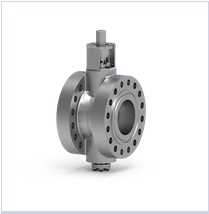Sep-2007
Identifying poor heat exchanger performance
Identifying root causes of poor crude unit debutaniser reboiler performance and low-cost solutions that help meet exchanger original design conditions
Mark Fernsby and Abe DuPont, Natref
Tony Barletta and Steve White, Process Consulting Services
Viewed : 13392
Article Summary
Heat exchangers are designed with engineering tools that allow the designer to evaluate the influence of various parameters on projected performance and select the optimum combination. However, computer model results are just calculations and only reflect actual performance if the model assumptions correctly predict what actually happens inside the exchanger. Consequently, when an exchanger does not perform per design, the model assumptions are not correct. Heat exchanger performance, just like that of any other refinery process equipment, depends on specific equipment design and not on the ideals of the computer model.
Reboiler system
In 2000, National Petroleum Refiners of South Africa (PTY) Ltd (Natref, a joint venture of Sasol and Total South Africa) commissioned a major crude/vacuum unit expansion. As part of the revamp, a new reboiler was installed on the crude debutaniser to provide increased duty to stabilise the increased production from the preflash and atmospheric crude columns. Total reboiler heat input needed to increase to remove enough of the C4s to meet the light straight-run (LSR) Rvp specification for gasoline pool blending. However, the debutaniser reboiler heat input was not sufficient to meet the light naphtha Rvp specifications after startup, particularly when processing light crude blends. The debutaniser’s maximum throughput was limited to 90% of design when the reboilers were clean. While in operation, fouling resulted in a 3.5% reduction in reboiler duty per month (equivalent to a reduced maximum throughput of about 750 bpd every month). At times, this began to limit the overall crude unit throughput.
The revamped debutaniser column was designed to operate with two reboilers. One used gas oil product. Its heat input was therefore set by product yield. This reboiler, which had not been mechanically altered during the revamp, was operating satisfactorily. The new steam reboiler was designed to supply the balance of the debutaniser heat requirements during normal operation and the total column heat requirements, so the gas oil reboiler could be taken offline for maintenance. This larger reboiler was designed for 42 kg/cm2 pressure steam (Figure 1) to replace one using 16 kg/cm2 pressure steam. After commissioning, the exchanger had a calculated service overall heat-transfer coefficient (U) as low as 25% of design. Various field tests were done to evaluate potential root causes. The exchanger was eventually taken out of service and inspected to ensure the actual design conformed to the drawings and assess whether the shell or tube sides were badly fouled. However, only a marginal performance improvement was noted when the exchanger was put back into service. Even when the reboiler was clean, its U value was less than 25% of design clean performance. Although the reboiler was never significantly fouled, its performance was sensitive even to small amounts of fouling compared to the other reboiler.
It is common to speculate on potential causes when equipment does not meet expected performance. In this case, theories included inherently poor heat transfer when using U-tubes instead of straight tubes, insufficient shell-side fluid circulation resulting in excessive vapourisation and two-phase flow irregularities in the reboiler return piping. Another was that the exchanger simply was not big enough and a new larger exchanger was needed. Many tests were conducted to investigate these and various other hypotheses that could explain the poor performance.
Determination of root causes must begin with a review of the specific system and equipment design, and the application of fundamental engineering principles. As engineering tools become increasingly complex, sophisticated and easier to use, such as computational fluid dynamics (CFD) models, engineers have a tendency to rely on these models and search for complex causes and solutions. This should not be a surprise given the increasing focus on engineering tools rather than on understanding fundamental equipment operating principles. Yet, understanding these principles remains the single most important factor in the design of process equipment and troubleshooting when the equipment does not perform as expected.
Reboiler basics
Potential reboiler problems can generally be separated into three areas: steam-side, process-side and exchanger design. Generally, there are only a couple of steam-side problems, the most common of which is flooding the exchanger with condensate, which reduces the condensing surface area. Potential process-side problems include a high system pressure drop, excessively low and high circulation rates, and slug flow in the reboiler return piping. Thermosiphon reboilers circulate tower bottoms fluid through the shell side of the exchanger based on system hydraulics. The liquid level in the bottom of the column and the globe valve at the inlet of the shell side (if present) is used to control circulation. Too low a circulation rate increases the percentage of vapourisation, which reduces the heat-transfer coefficient, and too high circulation reduces vapourisation, which can lead to slug flow in the return piping. As for potential exchanger design errors, many have caused low duty.
Exchanger design problems can reduce the service heat-transfer coefficient by affecting inside and outside film coefficients. Thermal conductivity of the tube is small compared to the film coefficients. Therefore, this term can be ignored. Thus, the “clean” heat-transfer coefficient (UC) is calculated from Equation 1:
1 = 1 + 1
Uc hi ho Eq 1
where:
UC = heat-transfer coefficient (clean)
hi = inside film coefficient
ho = outside film coefficient
Add your rating:
Current Rating: 3

















